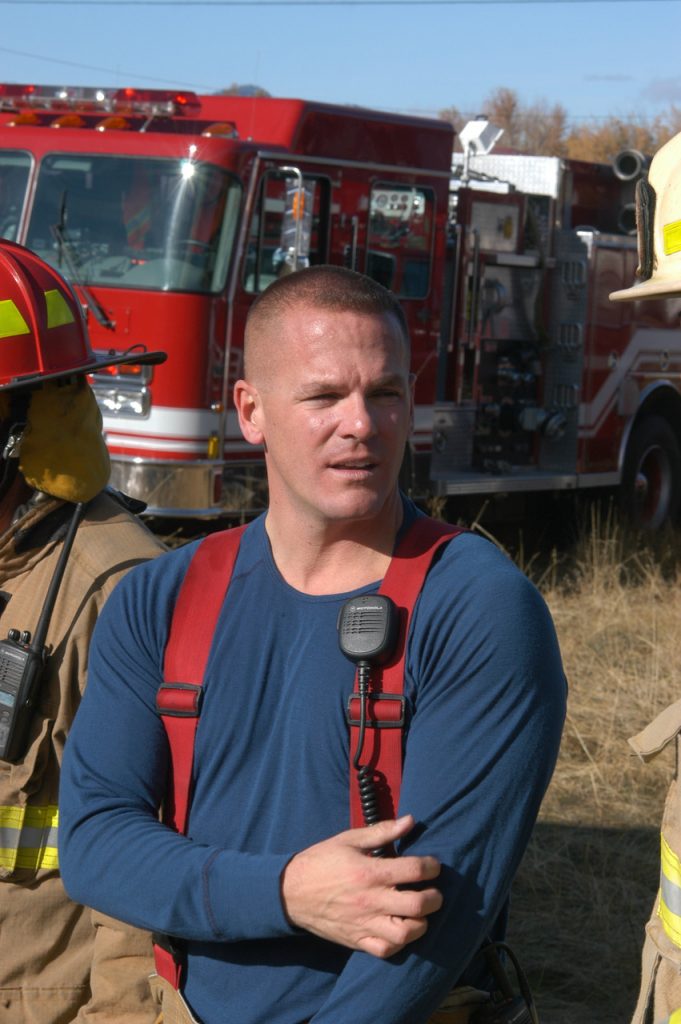
Armadillo Merino® dispelling the marketing myths of ‘wicking’ fabrics in emergency service’s PPE
In advance of The Emergency Services Show at the NEC (19th-20th September) Armadillo Merino®, who supply pure merino base layers to firefighters, the police, special forces and even NASA is campaigning to promote the benefits of wearing natural fabrics as part of a Protective Personal Equipment (PPE) layering system and to dispel the marketing myths regarding ‘wicking’ fabrics in emergency situations. Armadillo Merino® is exhibiting at the Emergency Services Show – Stand D-78
Many emergency services personnel wear basic t-shirts or a synthetic base layer under their protective outer clothing, which at high temperatures can melt and drip onto the skin inflicting severe burns.
In extreme temperatures, the next-to-skin garments are the last line of defense against heat and flames so the performance properties of garments need to be looked at more closely to prevent unnecessary injuries or potential loss of lives.
Andy Caughey, Managing Director of Armadillo Merino®, commented:
“Following this long dry summer, the wellbeing of our emergency services has never been more important. Climate change will continue to put them in more dangerous and inflammatory situations, so they need the best kit possible to help ensure their health and safety.
Climate change will continue to put them in more dangerous and inflammatory situations, so they need the best kit possible to help ensure their health and safety.
At Armadillo, we are trying to understand the dangerous situation that is currently happening within uniform procurement, of specifying polyester blends and in particular next-to-skin layers, when they know that the users are likely to face dangerous and potentially life threatening situations.”
There is an existing school of thought that claims synthetic based materials such as polyester effectively ‘wick’ sweat through tiny capillary like tubes in the fabric, moving moisture away from the skin and releasing it into your outer layers of clothing, or into the air.
This is factually incorrect. What actually happens is that the wearer, sweats with physical exertion, the skin and ultimately the garments gets wet. Once the garment is wet the sweat evaporates off the outer surface of the fabric. If you are wearing another layer on top, as in the case of emergency service uniforms then the sweat has nowhere to go.
What actually happens is that the wearer in a high heat environment, with a synthetic layer next to the skin will suffer severe steam burns to the body or worse from the melting, dripping synthetic material.
Merino wool is naturally flame resistant to 570 degrees; it is a hollow cellular fibre that absorbs your sweat in two ways, initially in the vapour form and then liquid before releasing the moisture to the outside. Your skin stays drier for longer.
Another advantage of merino wool is that the fibre can absorb up to 35% of its weight as moisture before the fabric starts to feel wet compared to only 5% for synthetic fabrics, so you feel the wetting sensation almost straight away when wearing your synthetic next to skin.
Andy continued:
 “Essentially, a synthetic garment does not wick moisture the way it is promoted while merino base fabrics keep you more comfortable by managing moisture and by a significant margin over synthetics.”
“Essentially, a synthetic garment does not wick moisture the way it is promoted while merino base fabrics keep you more comfortable by managing moisture and by a significant margin over synthetics.”
However, synthetic fabrics don’t only pose a burns hazard, they also contribute to the likelihood of the wearer taking in poisonous toxins through the skin.
There has been much research done into the hazards and respiratory issues relating to the inhalation of smoke and poisonous toxins. It’s a lesser-known fact that poisonous toxins are actually taken into through the skin, the body’s largest organ – covering about 2m².
When heated to a high temperature, synthetic fabrics worn as a base layer release clothing toxins directly into the skin. So, by adding a synthetic layer, you are inadvertently the raising the chances of the wearer absorbing poisonous toxins, not just from the fire but also from their own clothing.
Research has shown that many incidents of cancer occur around the body’s natural ‘hot spots’ – the groin, underarms and in the cases of female firefighters below the breasts. In the US statistics show that female firefighters have a three times higher incidence of developing breast cancer than the societal norm.
For more information on the benefits of merino visit https://armadillomerino.com


